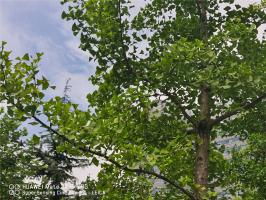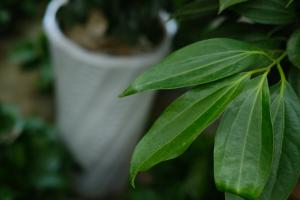When to Trim Tomato Plant Leaves
Tomatoes are one of the most popular vegetables to grow in a garden. They are easy to grow, delicious to eat and add a nice pop of color to any backyard. However, as with any plant, it is important to take care of them throughout the growing season in order to ensure a bountiful harvest. One way to care for tomatoes is to trim the leaves. But when is the best time to trim tomato plant leaves?
Before Fruit Matures
The best time to trim tomato plant leaves is before the fruits have matured. Trimming the leaves of a tomato plant helps to increase airflow and sunlight to the fruit, thereby improving their quality and flavor. You should start trimming the leaves when the plants are young, around 2-4 weeks after they have been transplanted into the garden. As the plants grow, continue to trim the leaves as necessary, typically once every week or two.
When the Plant is Growing too Much Foliage
If your tomato plant is growing too much foliage, it may be wise to trim some of the leaves. This will encourage the plant to direct its energy towards growing bigger and better fruits, rather than producing an excess of leaves. In general, trimming the lower leaves of the plant is recommended to allow better airflow and prevent the leaves from getting wet and becoming diseased.
To Control Pests and Diseases
Another reason to trim tomato plant leaves is to prevent pest and disease infestations. Trimming the leaves can help to reduce the amount of shade and moisture around the plant, which are ideal conditions for pests and diseases to thrive. Regular trimming can also help to prevent the spread of any diseases that may have already affected the plant. Leaves that show signs of disease, such as spots or discoloration, should be removed as soon as possible to prevent the disease from spreading to healthy leaves.
During Hot and Humid Conditions
During hot and humid weather conditions, tomato plants are at greater risk of developing diseases. Trimming the leaves can help to improve air circulation and reduce the amount of humidity around the plant. This will help to prevent the development of diseases such as blight, which can quickly spread and kill the plant. It is important to keep an eye on the weather forecast and trim the leaves accordingly.
Conclusion
Trimming tomato plant leaves is an important part of caring for your tomato plants. Timing is key when it comes to trimming the leaves, with the best time being before the fruits have matured. Trimming the leaves can help to improve fruit quality, prevent pest and disease infestations, and reduce the risk of diseases during hot and humid weather conditions. Take care when trimming, however, to avoid damaging the plant and stunting its growth.

 how many times do yo...
how many times do yo... how many planted tre...
how many planted tre... how many pine trees ...
how many pine trees ... how many pecan trees...
how many pecan trees... how many plants comp...
how many plants comp... how many plants can ...
how many plants can ... how many plants and ...
how many plants and ... how many pepper plan...
how many pepper plan...































